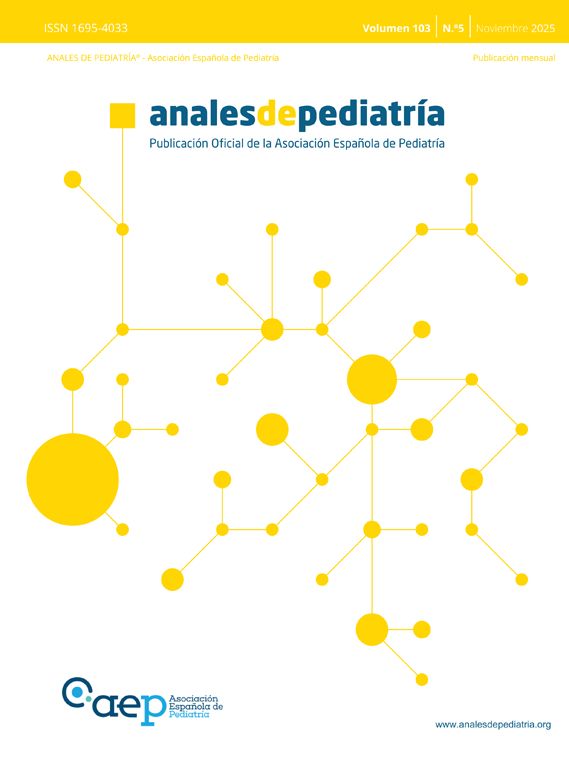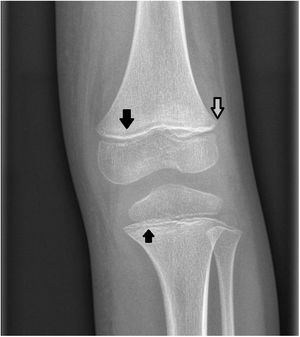A boy aged 6 years presented with petechiae in the lower extremities, gingival enlargement with episodes of gum bleeding and inability to stand of 2 weeks’ duration. In addition, the patient had been unable to walk in the past 2 months due to bone pain in alternating lower extremities. The patient reported no pain on sitting, but did feel pain with passive mobilization of the lower extremities (Figs. 1–3).
The salient features of the personal history were diagnosis of autism spectrum disorder level 2, with hypersensitivity to textures and a very restrictive diet (lacking fruit and vegetables since age 3 years).
Laboratory tests revealed anaemia (haemoglobin concentration, 10.6 ng/dL) and an elevated erythrocyte sedimentation rate (61 mm/h), and normal results in the rheumatology screening tests. The hip and femur radiographs, ultrasound examination of the hip and the bone scintigraphy were normal, while the finding of the radiograph of the left knee were suggestive of scurvy.
The patient started treatment with ascorbic acid (300 mg/day for 7 days followed by 100 mg/day for 1 month) and improved rapidly, with full resolution of symptoms and normalization of test results within 2 weeks.
Scurvy must be considered in the differential diagnosis of patients presenting with petechiae, ecchymosis, gingivitis and joint pain after a few months of deficient vitamin C intake. It should also be suspected in patients with neurologic disorders who have restrictive diets.1–3









